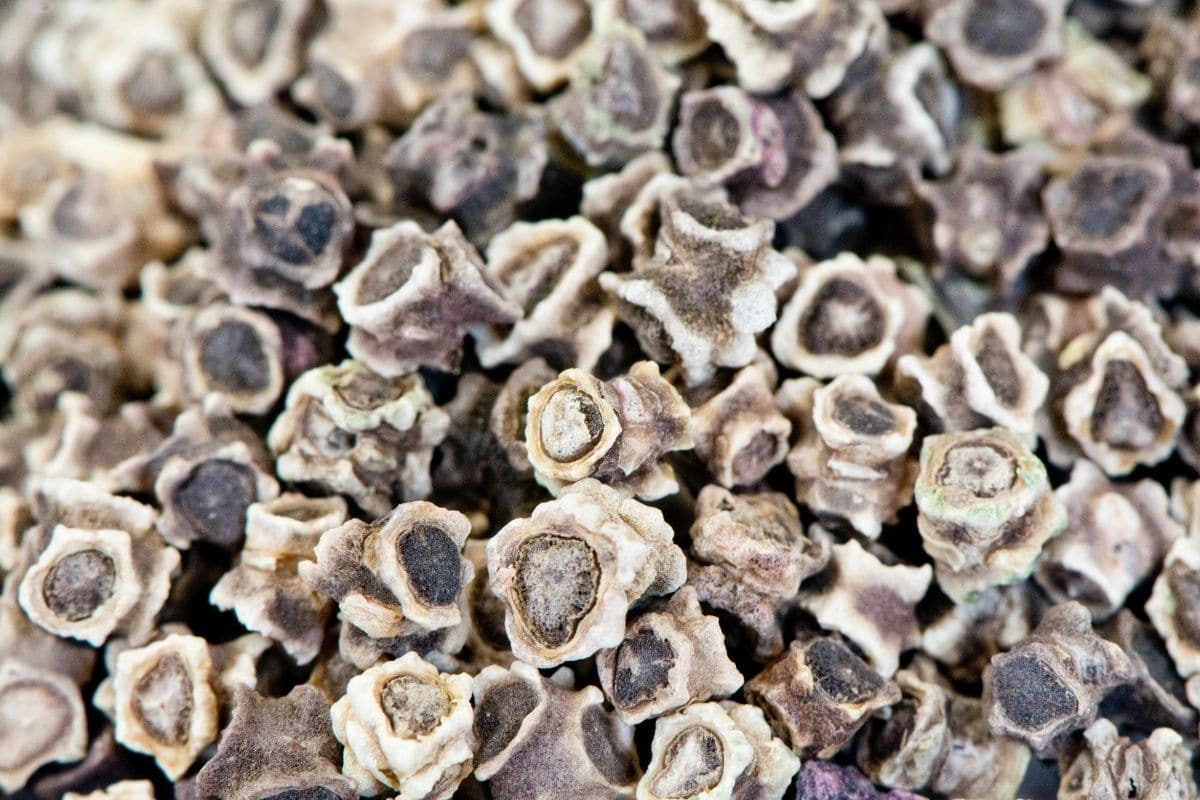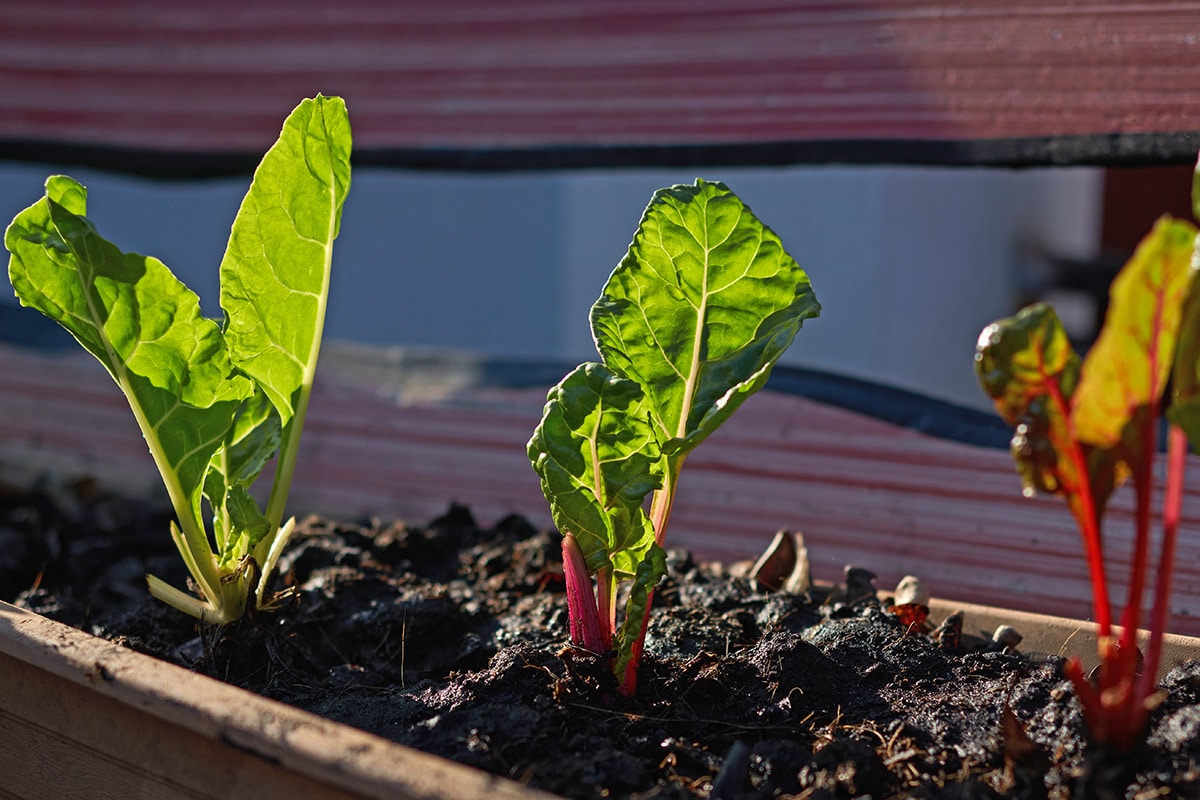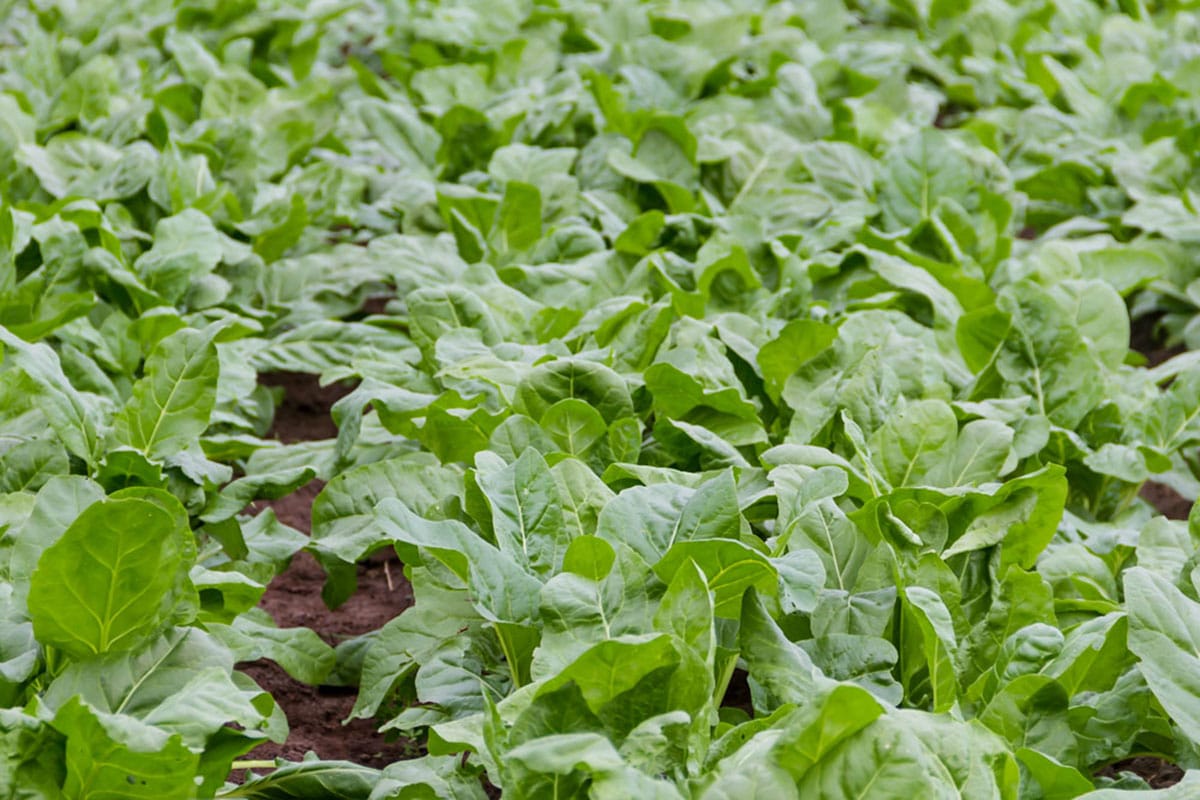Chard (Beta vulgaris) can be sown from April. As early as March, young plants can be pre-picked for an earlier harvest of chard. How to do this and whether you need to prick chard, read our guide.
- Preplanting possible from March onwards
- Plant the seeds in individual pots, if possible
- provide a warm and humid climate
- Do not prick out, but transplant
- Plant out from the end of April
Contents
growing chard
For the successful cultivation of chard you need a lot of heat – the capsule fruits (which often contain several seeds) germinate best at temperatures between 16 and 20 °C. Therefore, it is recommended to grow chard, which is rich in vitamins, in advance, which can be done from the beginning of March. The best way to do this is as follows:
- use individual small growing pots (e.g., made of cellulose)
- fill with low-nutrient growing soil
- alternatively herbal soil can be used
- sowing is also possible on coco sticks
- plant one seed per pot or tab
- planting depth approx. one centimeter, because of dark germinators
- moisten substrate
- place pots in mini-greenhouse or cover with foil
- place in a bright, but not directly sunny location

For germination, chard requires a warm and humid climate, so you should keep the substrate evenly moist and also place the pots in a greenhouse or cover them with foil. Alternatively, you can put cut PET bottles over them. Within seven to 14 days, the chard seeds will have germinated.
Note: The chard seeds are in so-called capsule fruits, which usually contain several seeds. Therefore, several shoots often sprout from one “seed”, which is a botanical peculiarity.
Pricking out or warping?
Even if you sow chard individually, as we suggest, you will often get several plants from one “seed”. Of course, these must not grow too closely, which is why the question of pricking soon arises. However, we advise against singling and transplanting (because that is what it is), because the root strands of the young plants are usually very intertwined and therefore difficult to separate without damage. Root damage, in turn, can cause the chard plantlets to be weak and may not recover.
Instead, you should warp, i.e., remove, any excess or overly crowded specimens, leaving only the strongest plant. Another option, which is gentler on the roots, is to simply cut off any excess plantlets right at the soil surface with scissors. The best time to do this is when the first true pair of leaves has already formed after the cotyledons.

Note: Sometimes you can read in garden forums that chard does not need to be pricked or warped. In fact, you could omit this step for a single sowing. However, chard is quite susceptible to mildew, against which only an airy stand will help.
Planting out
From the end of April, the pre-cultivated chard plants can be planted in the garden, although you should cover them to protect them from the cold if late frosts are imminent. For this purpose, special cover mats (e.g. a garden fleece) or fir or spruce twigs are suitable. During the day, however, the cover should be removed so that the plants get enough light for their development. Proceed as follows when planting out:
- Prepare bed with compost and organic fertilizer.
- Plant out leafy chard to a spacing of 30 x 20 centimeters
- Stem chard to 40 x 40 centimeters
- press down well, then water vigorously
- Mulch the soil, e.g. with grass cuttings
For planting out, choose a warm day with overcast skies if possible, so that the young plants can slowly get used to the new light conditions. For healthy growth and the development of rich foliage, chard needs plenty of moisture, so mulching the soil is a good idea. This keeps the moisture in the soil and ensures that you need to water less frequently.

Tip: Chard can be sown until July. These late sowings can overwinter, but then must be protected by foliage cover.
Frequently asked questions
How to use chard in the kitchen?
Chard can be harvested not just once, but multiple times. Throughout the summer, always harvest only the outer leaves and leave the “heart”. From this, the plants will grow back again and again. In the kitchen, leaf chard is used like spinach; with stem chard, on the other hand, you cut out the broad “ribs” and cook them like asparagus. The leafy greens are steamed separately. Always use chard fresh, as it does not keep long.
Which varieties are particularly recommended?
There are two different types of this vitamin-rich leafy vegetable: leafy chard and ribbed or stem chard. Both are available in many different varieties, with the red-stemmed varieties having a somewhat more tart taste. For example, the leafy chard variety ‘Lucullus’, the ribbed chard varieties ‘Smooth Silver’, ‘White Silver’, ‘Walliser’, the variegated and attractive ‘Bright Lights’, the red-stemmed ‘Rhubarb Chard’ and ‘Feurio’, and the yellow-stemmed variety ‘Pirol’ are particularly recommended.
Pre-growing And Pricking Chard: This Is How It WorksWhich vegetables make good neighbors?
Swiss chard is an attractive plant that also looks good in a perennial bed. In the vegetable bed, on the other hand, various types of cabbage as well as carrots, radishes and radishes are good neighbors, although you should of course always pay attention to the recommended planting distance. Lettuce, on the other hand, is very suitable as an interspace crop.

